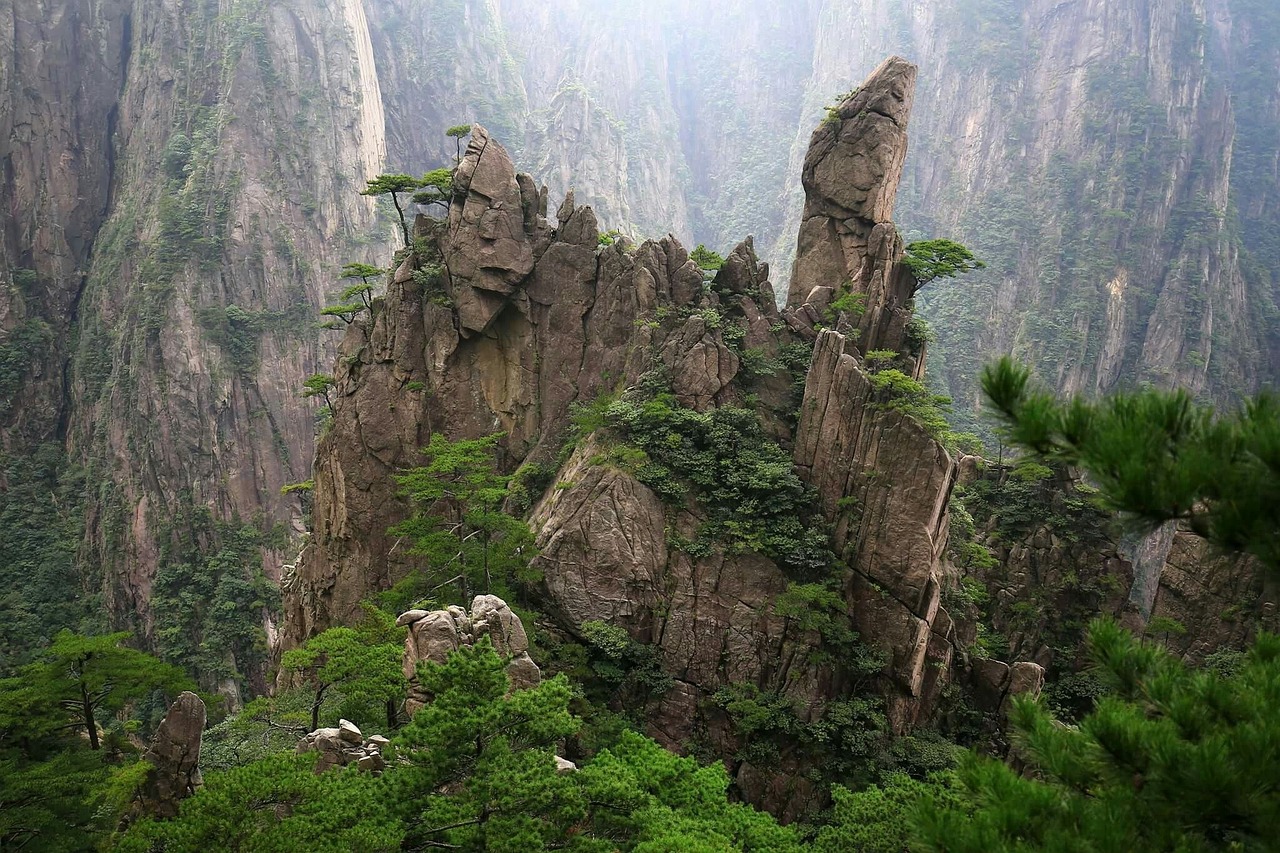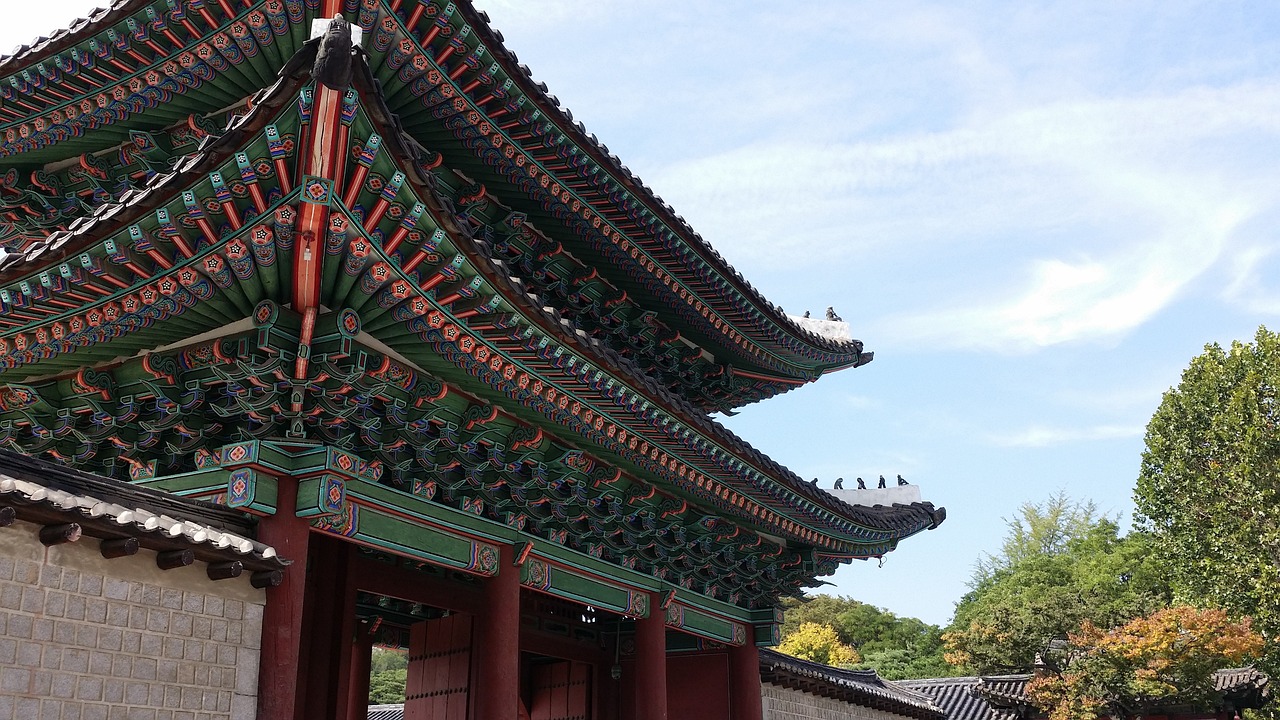Ancient Chinese Dynasties - A History of Power
Embark on a journey through time to uncover the fascinating tapestry of ancient Chinese dynasties, each thread woven with power, culture, and governance. From the mythical beginnings of the Xia Dynasty to the maritime expeditions of the Ming Dynasty, the evolution of China's ruling houses mirrors the ebbs and flows of a mighty river, shaping the course of history in one of the world's oldest civilizations.
As we delve into the legendary origins of the Xia Dynasty, we are met with a tapestry of myth and archaeology, painting a picture of a time when Yu the Great ruled the land and laid the foundations of early Chinese civilization. The Xia Dynasty stands as a testament to the enduring legacy of China's past, a bridge between the realms of legend and history.
The Shang Dynasty emerges as a master of the Bronze Age, showcasing advancements in metallurgy and the development of oracle bone inscriptions that offer glimpses into the past. This era of social hierarchy and cultural sophistication paved the way for future dynasties, leaving an indelible mark on the Chinese feudal system.
Under the Zhou Dynasty, the concept of the Mandate of Heaven takes center stage, shaping the political philosophy and feudal structure of ancient China. From the Western Zhou to the tumultuous era of the Warring States, the Zhou Dynasty navigates the complexities of power and governance, leaving a lasting impact on the dynasties that follow.
The rise of the Qin Dynasty heralds a new era of unification and legalism under the rule of Emperor Qin Shi Huang. The construction of the Great Wall, standardization of writing and currency, and the implementation of Legalism mark a pivotal moment in Chinese history, paving the way for a unified empire.
Enter the Golden Age of Chinese civilization with the Han Dynasty, a time of unprecedented achievements in governance, economy, arts, and sciences. From the Silk Road trade to the invention of paper and the expansion of the civil service system, the Han Dynasty shines as a beacon of cultural and intellectual flourishing.
Experience the cultural renaissance of the Tang Dynasty, a period known for its poetry, painting, and technological innovations. The Tang Dynasty's diplomatic relations along the Silk Road and the cosmopolitan capital of Chang'an serve as testaments to China's global reach and cultural richness.
Witness the intellectual and technological advancements of the Song Dynasty, where Neo-Confucianism takes root and innovations such as movable type printing and porcelain shape the landscape of Chinese society. The Song Dynasty's legacy of intellectual curiosity and artistic ingenuity cements China's position as a center of innovation.
Follow the Ming Dynasty's maritime expeditions led by Admiral Zheng He, the grandeur of the Forbidden City in Beijing, and the revival of Confucianism in the face of change. The Ming-Qing transition marks the end of an era, closing the chapter on ancient Chinese dynasties while leaving a legacy of exploration and cultural exchange.

Xia Dynasty - The Legendary Beginnings
Exploring the rich history of ancient Chinese dynasties, from the Xia Dynasty to the Qing Dynasty, showcasing the evolution of power, culture, and governance in one of the world's oldest civilizations.
The Xia Dynasty holds a legendary status in Chinese history, with its origins deeply rooted in myth and archaeological discoveries. Considered the first dynasty in Chinese history, the Xia Dynasty is renowned for the reign of Yu the Great, a wise ruler credited with controlling floods and laying the foundation for early Chinese civilization.
Archaeological evidence, such as the Erlitou site in Henan province, provides insights into the early developments of Chinese society during the Xia Dynasty. The dynasty's existence has been a subject of debate among historians, blending historical accounts with mythical narratives to create a compelling tapestry of ancient Chinese culture.
Yu the Great's legendary feats, including taming the Yellow River and establishing irrigation systems, symbolize the Xia Dynasty's emphasis on governance and societal order. The dynasty's influence on subsequent dynasties, despite its mythical origins, highlights the enduring legacy of early Chinese civilization.

Shang Dynasty - Bronze Age Mastery
The Shang Dynasty, known for its Bronze Age mastery, was a pivotal period in ancient Chinese history marked by significant advancements in various fields. One of the most notable achievements of the Shang Dynasty was its mastery of bronze metallurgy, which revolutionized the production of tools, weapons, and ceremonial objects. The intricate craftsmanship displayed in Shang bronze artifacts, such as ritual vessels and weapons, reflected the sophistication and artistic skill of this era.
Additionally, the Shang Dynasty is renowned for the development of oracle bone inscriptions, which served as an early form of writing and record-keeping. These inscriptions on animal bones and turtle shells provide valuable insights into Shang society, including religious practices, political events, and social structure. The deciphering of these inscriptions has greatly enhanced our understanding of ancient Chinese civilization.
Furthermore, the Shang Dynasty established a complex social hierarchy characterized by a ruling elite, aristocrats, artisans, and commoners. This hierarchical structure laid the foundation for the Chinese feudal system, with the king at the apex of power, supported by a network of nobles and officials. The Shang rulers wielded authority through a centralized government and a sophisticated bureaucracy, overseeing agricultural production, trade, and religious ceremonies.
In conclusion, the Shang Dynasty's Bronze Age mastery not only propelled technological and artistic innovation but also laid the groundwork for future dynasties in China. The legacy of the Shang Dynasty continues to influence Chinese culture, art, and governance to this day, underscoring its enduring impact on the evolution of one of the world's oldest civilizations.

Zhou Dynasty - Mandate of Heaven
Exploring the rich history of ancient Chinese dynasties, from the Xia Dynasty to the Qing Dynasty, showcasing the evolution of power, culture, and governance in one of the world's oldest civilizations.
Delve into the mythical origins and archaeological evidence of the Xia Dynasty, considered the first dynasty in Chinese history, known for the reign of Yu the Great and the development of early Chinese civilization.
Discover the Shang Dynasty's advancements in bronze metallurgy, oracle bone inscriptions, and social hierarchy, highlighting its influence on subsequent dynasties and the establishment of the Chinese feudal system.
Explore the concept of the Mandate of Heaven under the Zhou Dynasty, its political philosophy, feudal structure, and the transition from the Western Zhou to the Eastern Zhou period, including the Warring States era.
Uncover the rise of the Qin Dynasty under Emperor Qin Shi Huang, the construction of the Great Wall, standardization of writing and currency, and the implementation of Legalism, leading to the unification of China.
Examine the Han Dynasty's achievements in governance, economy, arts, and sciences, including the Silk Road trade, invention of paper, expansion of the civil service system, and the reign of Emperor Wu.
Experience the cultural renaissance of the Tang Dynasty, known for its poetry, painting, and technological innovations, as well as its diplomatic relations along the Silk Road and the cosmopolitan capital of Chang'an.
Witness the intellectual and technological advancements of the Song Dynasty, the rise of Neo-Confucianism, the invention of movable type printing, and the development of porcelain, enhancing China's global influence.
Follow the Ming Dynasty's maritime expeditions led by Admiral Zheng He, the construction of the Forbidden City in Beijing, the revival of Confucianism, and the Ming-Qing transition, marking the end of the ancient Chinese dynasties.
The Zhou Dynasty, with its concept of the Mandate of Heaven, established a political philosophy that shaped Chinese governance for centuries. This divine mandate asserted that the ruler was chosen by the heavens to rule, but could be overthrown if deemed unfit or corrupt. This belief system provided a justification for the dynastic cycle, where a new dynasty would claim the mandate after overthrowing the previous one, ensuring stability and legitimacy in leadership.

Mandate of Heaven
Exploring the rich history of ancient Chinese dynasties, from the Xia Dynasty to the Qing Dynasty, showcasing the evolution of power, culture, and governance in one of the world's oldest civilizations.
Delve into the mythical origins and archaeological evidence of the Xia Dynasty, considered the first dynasty in Chinese history, known for the reign of Yu the Great and the development of early Chinese civilization.
Discover the Shang Dynasty's advancements in bronze metallurgy, oracle bone inscriptions, and social hierarchy, highlighting its influence on subsequent dynasties and the establishment of the Chinese feudal system.
Explore the concept of the under the Zhou Dynasty, its political philosophy, feudal structure, and the transition from the Western Zhou to the Eastern Zhou period, including the Warring States era.
Uncover the rise of the Qin Dynasty under Emperor Qin Shi Huang, the construction of the Great Wall, standardization of writing and currency, and the implementation of Legalism, leading to the unification of China.
Examine the Han Dynasty's achievements in governance, economy, arts, and sciences, including the Silk Road trade, invention of paper, expansion of the civil service system, and the reign of Emperor Wu.
Experience the cultural renaissance of the Tang Dynasty, known for its poetry, painting, and technological innovations, as well as its diplomatic relations along the Silk Road and the cosmopolitan capital of Chang'an.
Witness the intellectual and technological advancements of the Song Dynasty, the rise of Neo-Confucianism, the invention of movable type printing, and the development of porcelain, enhancing China's global influence.
Follow the Ming Dynasty's maritime expeditions led by Admiral Zheng He, the construction of the Forbidden City in Beijing, the revival of Confucianism, and the Ming-Qing transition, marking the end of the ancient Chinese dynasties.
The concept of the was a crucial political and philosophical idea during the Zhou Dynasty in ancient China. It was believed that the ruler was chosen by divine approval, and as long as the ruler governed well and justly, he would have the support of the heavens. However, if a ruler became corrupt or ineffective, it was seen as a sign that the mandate had been withdrawn, leading to the downfall of the dynasty. This concept helped to justify changes in power and legitimize the rule of new dynasties, shaping the political landscape of ancient China.

under the Zhou Dynasty, its political philosophy, feudal structure, and the transition from the Western Zhou to the Eastern Zhou period, including the Warring States era.
During the Zhou Dynasty, the concept of the Mandate of Heaven played a crucial role in shaping Chinese political philosophy. This idea asserted that the ruler was chosen by divine approval, and as long as the ruler governed justly, the dynasty would prosper. However, if a ruler became corrupt or incompetent, it was believed that the mandate would be withdrawn, leading to the downfall of the dynasty. This philosophy not only legitimized the authority of the ruling elite but also set the standard for governance and leadership in ancient China.
Furthermore, the Zhou Dynasty established a feudal structure that divided the territory into smaller states ruled by regional lords who owed allegiance to the central Zhou monarchy. This system of decentralized power helped in the administration of the vast empire and ensured loyalty from the regional rulers. It also laid the groundwork for the establishment of the Chinese feudal system, which influenced subsequent dynasties in their governance and territorial control.
As the Zhou Dynasty progressed, it underwent a significant transition from the Western Zhou period to the Eastern Zhou period. This transition was marked by political instability, social unrest, and the emergence of powerful regional states vying for control. The weakening central authority led to the Warring States era, a time of intense warfare and political fragmentation among the various states. This period of conflict ultimately paved the way for the rise of the Qin Dynasty and the unification of China under Emperor Qin Shi Huang.

Qin Dynasty - Unification and Legalism
During the reign of the Qin Dynasty, China witnessed a significant period of unification and transformation under the rule of Emperor Qin Shi Huang. One of the most remarkable achievements of this dynasty was the construction of the Great Wall of China, a monumental feat that symbolized the consolidation of various warring states into a single empire.
Emperor Qin Shi Huang also implemented the philosophy of Legalism, which emphasized strict laws and centralized control to maintain order and authority. This ideology played a crucial role in unifying the diverse regions of China under a single administration, laying the foundation for a centralized bureaucratic system that would endure for centuries.
Furthermore, the Qin Dynasty standardized writing systems and currency, promoting cultural unity and facilitating communication and trade across the empire. This standardization not only streamlined administrative processes but also contributed to the development of a shared cultural identity among the Chinese populace.
Through a series of military campaigns and strategic alliances, the Qin Dynasty expanded its territorial reach, bringing vast regions under its control and establishing a powerful empire that set the stage for future dynasties to build upon. The legacy of the Qin Dynasty's unification efforts reverberated throughout Chinese history, shaping the political landscape and cultural identity of the nation for generations to come.

Han Dynasty - Golden Age of Chinese Civilization
The Han Dynasty is often regarded as the Golden Age of Chinese Civilization, a period marked by significant advancements and achievements across various fields. One of the notable contributions of the Han Dynasty was the establishment of the Silk Road trade route, which facilitated cultural exchange and economic prosperity between China and the West. This trade network not only boosted commerce but also fostered the spread of ideas, technologies, and innovations.
Moreover, the Han Dynasty is credited with the invention of paper, a revolutionary development that revolutionized communication, education, and record-keeping. The widespread use of paper significantly enhanced administrative efficiency and intellectual pursuits, laying the foundation for future advancements in literature, art, and scholarship.
Another key aspect of the Han Dynasty's legacy is the expansion of the civil service system, which emphasized merit-based recruitment and promotion of officials based on their abilities and qualifications rather than noble lineage. This meritocratic approach to governance enabled talented individuals from diverse backgrounds to contribute to the administration, fostering stability and efficiency within the government.
Emperor Wu of the Han Dynasty is particularly renowned for his ambitious military campaigns and territorial expansion, which extended Chinese influence and control over vast territories. His reign saw the consolidation of power, the promotion of Confucian ideals, and the patronage of arts and culture, leading to a flourishing period of creativity and innovation.
Overall, the Han Dynasty's Golden Age symbolizes a pinnacle of Chinese civilization, characterized by prosperity, cultural vibrancy, and technological progress. The legacy of the Han Dynasty continues to resonate in modern China, reflecting a rich heritage of achievement and endurance that has shaped the country's identity and historical trajectory.

Tang Dynasty - Cultural Flourishing and Silk Road Trade
Exploring the rich history of ancient Chinese dynasties, from the Xia Dynasty to the Qing Dynasty, showcasing the evolution of power, culture, and governance in one of the world's oldest civilizations.
The Tang Dynasty, often referred to as the "Golden Age of Chinese Poetry," was a time of immense cultural flourishing and significant advancements in various fields. During this period, China experienced a renaissance in arts, literature, and technology, solidifying its influence across the Silk Road trade routes.
One of the most notable aspects of the Tang Dynasty was its vibrant poetry scene, with poets like Li Bai and Du Fu creating timeless works that captured the essence of Chinese culture and society. The dynasty's capital, Chang'an, emerged as a cosmopolitan center where artists, scholars, and traders from different regions converged, fostering a dynamic cultural exchange.
Moreover, the Tang Dynasty witnessed remarkable technological innovations, such as the invention of woodblock printing, which revolutionized the dissemination of knowledge and literature. This period also saw advancements in ceramic production, with Tang pottery becoming highly prized for its exquisite craftsmanship and intricate designs.
Alongside its cultural achievements, the Tang Dynasty played a crucial role in facilitating trade along the Silk Road, a network of ancient trade routes connecting China to the Mediterranean world. The dynasty's diplomatic relations with neighboring countries and the establishment of prosperous trade hubs further enriched China's economic and cultural landscape.
Overall, the Tang Dynasty's cultural flourishing and active participation in the Silk Road trade not only elevated China's global standing but also left a lasting legacy in the realms of art, literature, and commerce.
Q: Which Chinese dynasty is known as the "Golden Age of Chinese Poetry"?
A: The Tang Dynasty is often referred to as the "Golden Age of Chinese Poetry" due to the prolific literary output and cultural achievements during that period.
Q: What were some of the technological innovations of the Tang Dynasty?
A: The Tang Dynasty is credited with inventions such as woodblock printing, which revolutionized the dissemination of literature, and advancements in ceramic production, leading to the creation of exquisite Tang pottery.
Q: How did the Tang Dynasty contribute to trade along the Silk Road?
A: The Tang Dynasty played a pivotal role in facilitating trade along the Silk Road through diplomatic relations with neighboring countries, the establishment of trade hubs, and the promotion of cultural exchange.

Song Dynasty - Neo-Confucianism and Innovations
The Song Dynasty marked a significant period in Chinese history, characterized by a flourishing of intellectual and technological advancements. One of the key developments during this time was the rise of Neo-Confucianism, a philosophical movement that combined Confucian ideas with Buddhist and Daoist beliefs. This fusion of philosophies aimed to provide a moral and ethical framework for society, emphasizing the importance of self-cultivation, social harmony, and the pursuit of knowledge.
Alongside the philosophical developments, the Song Dynasty was also a time of great innovation in various fields. One notable invention was movable type printing, credited to Bi Sheng, which revolutionized the dissemination of information and contributed to the spread of literacy. This technological advancement laid the foundation for the later development of printing press technology in Europe.
In addition to advancements in printing, the Song Dynasty was known for its achievements in the field of ceramics. The development of porcelain, a type of high-quality ceramic ware, reached new heights during this period. Song Dynasty porcelain is renowned for its delicate beauty, fine craftsmanship, and distinctive glazes, setting a standard that would influence ceramic production for centuries to come.

Ming Dynasty - Maritime Expeditions and Forbidden City
Exploring the rich history of ancient Chinese dynasties, from the Xia Dynasty to the Qing Dynasty, showcasing the evolution of power, culture, and governance in one of the world's oldest civilizations.
The Ming Dynasty, known for its maritime expeditions and the construction of the Forbidden City in Beijing, marked a significant period in Chinese history. Under the leadership of Admiral Zheng He, the Ming Dynasty undertook ambitious naval expeditions that reached as far as Africa, showcasing China's maritime prowess and diplomatic reach. These expeditions not only expanded Chinese influence but also facilitated cultural exchange and trade along the maritime Silk Road.
Meanwhile, the construction of the Forbidden City in Beijing symbolized the Ming Dynasty's centralized power and grandeur. This imperial palace complex served as the political and ceremonial center of the Ming emperors, showcasing exquisite Chinese architecture, intricate designs, and imperial gardens. The Forbidden City remains a UNESCO World Heritage Site, attracting visitors from around the globe to marvel at its historical significance and architectural splendor.
As the Ming Dynasty came to an end with the Ming-Qing transition, it left a lasting legacy of maritime exploration, architectural marvels, and cultural achievements that continue to shape China's identity and history.
Q: What was the significance of Admiral Zheng He's maritime expeditions during the Ming Dynasty?
A: Admiral Zheng He's expeditions were significant in expanding Chinese influence, promoting trade, and showcasing China's naval power on a global scale.
Q: Why is the Forbidden City in Beijing considered a cultural treasure?
A: The Forbidden City is revered for its architectural beauty, historical importance as an imperial palace, and representation of Chinese imperial power and grandeur.
Q: How did the Ming Dynasty contribute to China's cultural and historical heritage?
A: The Ming Dynasty's achievements in maritime exploration, architecture, arts, and governance left a lasting impact on Chinese culture, history, and identity, influencing subsequent dynasties and generations.
Frequently Asked Questions
- What were the major achievements of the Han Dynasty?
The Han Dynasty made significant contributions to Chinese civilization, including the development of the Silk Road trade route, the invention of paper, the expansion of the civil service system, and the reign of Emperor Wu, known for his military conquests and cultural patronage.
- How did the concept of the Mandate of Heaven influence the Zhou Dynasty?
The Mandate of Heaven was a political and philosophical concept used by the Zhou Dynasty to justify their rule as divinely ordained. It stated that the ruler was chosen by the heavens to rule as long as they governed in the best interest of the people. This concept shaped Chinese dynastic history and the legitimacy of rulers for centuries.
- What were the key features of the Shang Dynasty?
The Shang Dynasty was known for its advancements in bronze metallurgy, the use of oracle bone inscriptions for divination and record-keeping, and the establishment of a social hierarchy with the king at the top. These cultural and technological achievements laid the foundation for subsequent Chinese dynasties.
- How did the Tang Dynasty contribute to cultural flourishing?
The Tang Dynasty was a period of cultural renaissance in China, with advancements in poetry, painting, and technological innovations. The dynasty's diplomatic relations along the Silk Road facilitated cultural exchange and the flourishing of arts and sciences, making it a golden age of Chinese civilization.
- What were the main accomplishments of the Ming Dynasty?
The Ming Dynasty is known for its maritime expeditions led by Admiral Zheng He, the construction of the Forbidden City in Beijing, the revival of Confucianism, and the Ming-Qing transition. These achievements marked a significant period in Chinese history, blending cultural, political, and economic developments.



















